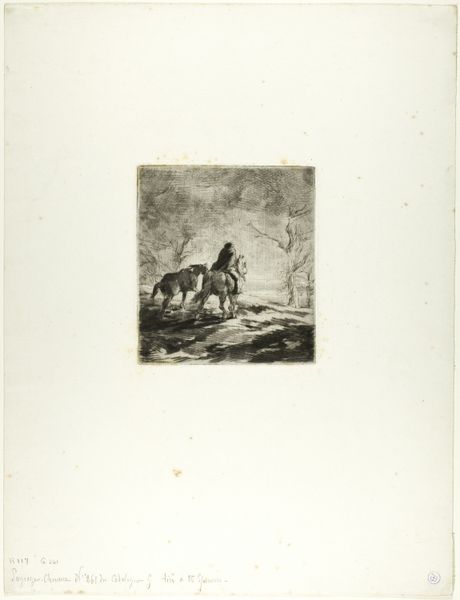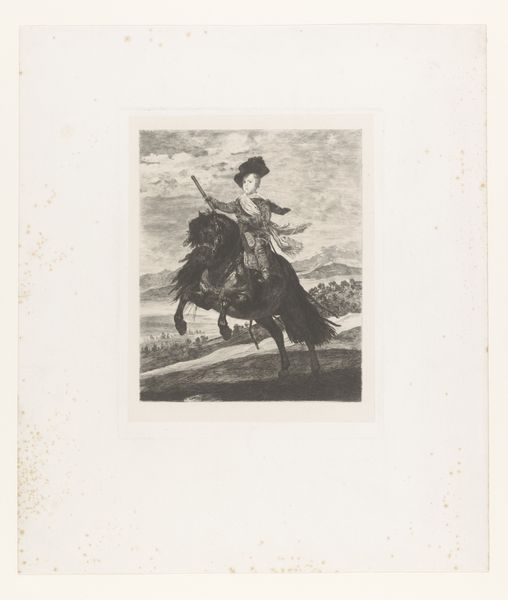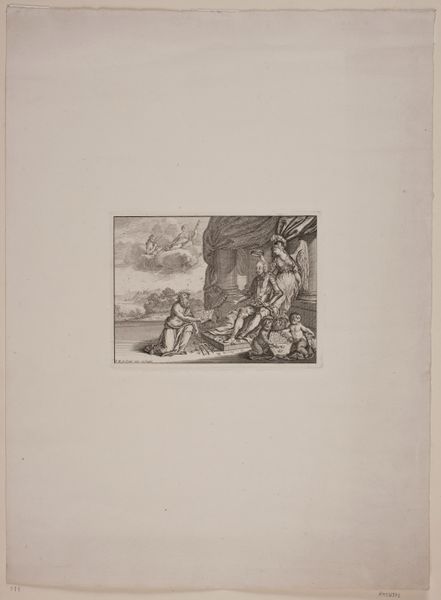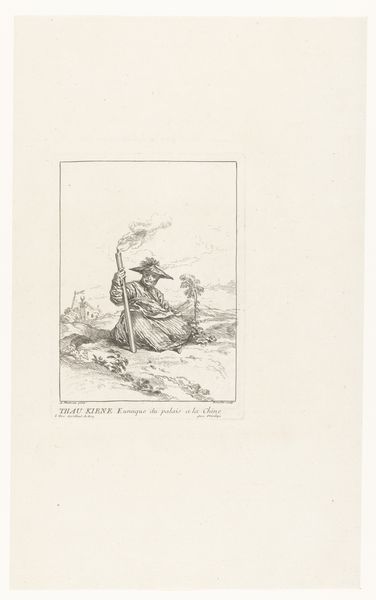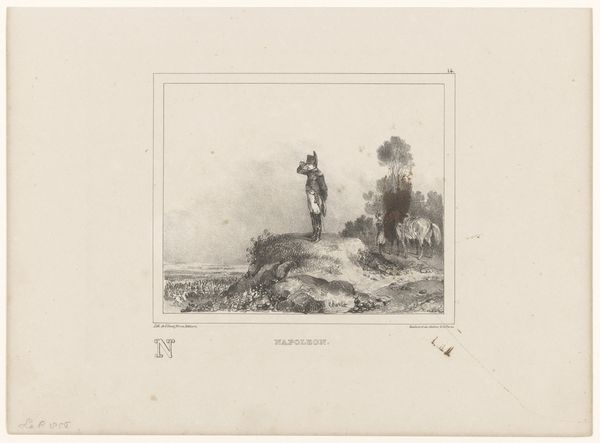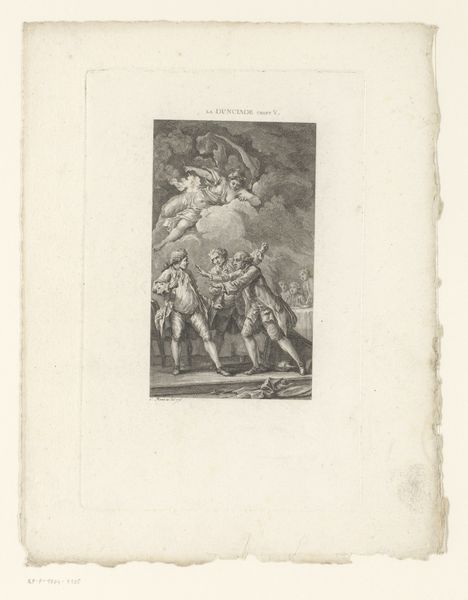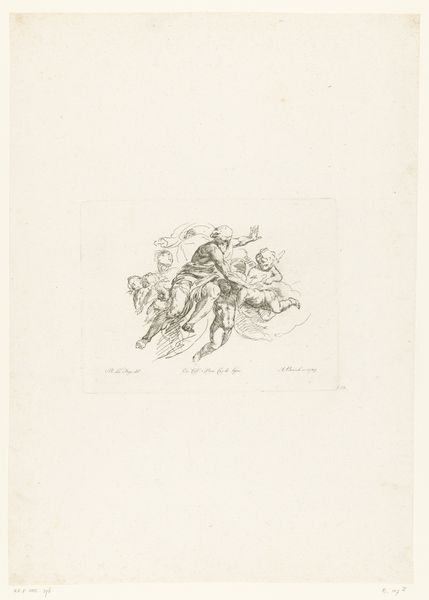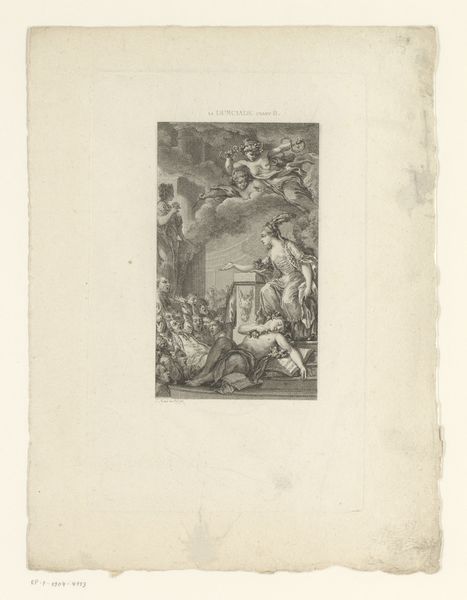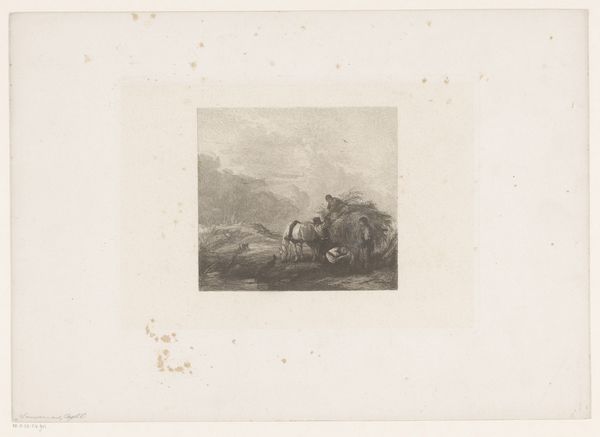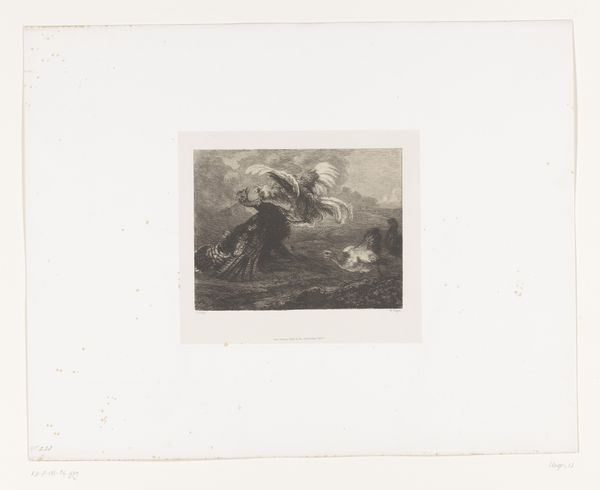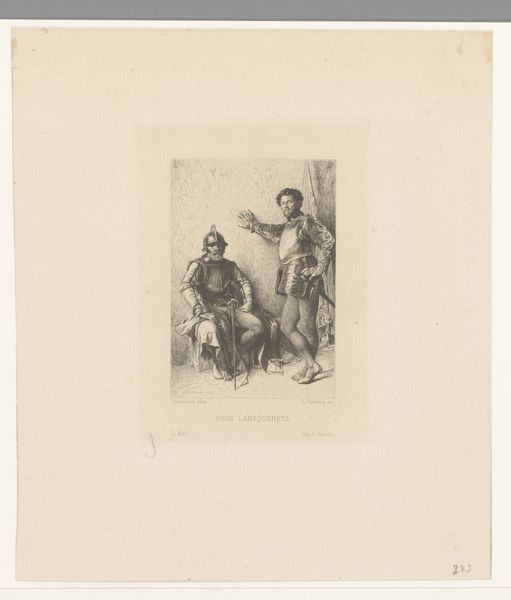
Dimensions: height 239 mm, width 158 mm
Copyright: Rijks Museum: Open Domain
Curator: This is Léopold Flameng's "Arabische valkenier," created in 1863. It's an engraving, primarily ink on paper. Editor: It immediately strikes me as intensely active—that horse mid-gallop, the falcon taking flight... a dynamic composition overall, even in monochromatic print. Curator: The composition is fascinating, indeed. Note the figure's posture—so upright, almost rigid, which contrasts the chaotic movement of the horse beneath him. It sets up a compelling tension. There's a deliberate visual strategy to highlight the man’s authority. Editor: I wonder about the specific material choices influencing the reading of such power dynamics. The fineness of the engraving lines allows for nuanced detailing in the clothing, creating a sense of lavishness even in grayscale. Were these prints made available to different classes? Did the means of reproduction influence the artwork's accessibility, or its perception? Curator: Those are important material concerns to consider. We know that the engraver reproduced images for books and periodicals. Consider, though, how Flameng uses light and shadow—the stark contrasts that add to the drama, further enhanced by the Romantic style’s emphasis on the exotic. Editor: I keep thinking about that falconer's garb though. Who was sewing it, who wove the materials, how were the dyes manufactured? Thinking about those processes of material production, and of course the labour required, casts an odd light on his majestic pose. Curator: Indeed. By bringing our attention back to those systems, you make visible a history otherwise rendered absent by pictorial strategies. Well, I suppose what we have here is the interplay of social life and the artist's technique. Editor: Exactly! A constant, fascinating conversation between material and form.
Comments
No comments
Be the first to comment and join the conversation on the ultimate creative platform.
